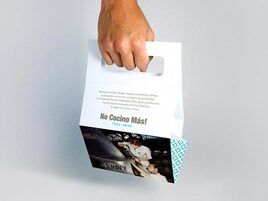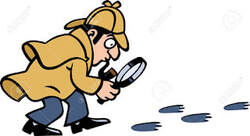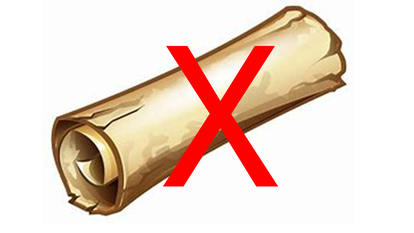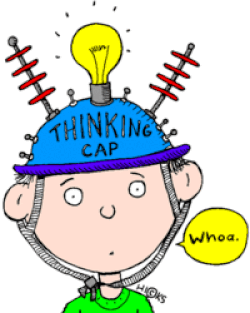 Once again we turn to Facebook for the inspiration for our blog and one of the perennially reoccurring questions on which writers ask advice. “Is it Ok for me to quote song lyrics/use images in my book?” Yes, this is about the laws of copyright, and they are an essential for self-published authors to understand if they want to stay out of the law courts. Unfortunately, instead of Googling the answer, these writers ask other writers, not all of whom have a good grasp of the law as it relates to copyright. First of all, I must give a legal warning of my own, which is that the copyright laws vary from country to country. The major differences are in the duration of copyright after the death of the copyright owner, so it is well worth Googling the law as it relates to your own country. What I discuss here relates to the law as it is applied in the UK and EU. What is consistent between countries is that there is a general agreement that each country will uphold the copyright law as it is applied in the country where the work was first copyrighted. So, if you are in the UK and you publish something that is copyright protected in the USA, then British courts will uphold the USA copyright law if the USA copyright owner asks them to. Copyright law exists to protect the creators of original work (which, of course, includes you and me). The work can come in many forms, written, musical, graphic or photographic, digital or physical and the laws are constantly being updated to keep up with modern technology. But first, let’s deal with a misunderstanding.  Fair Use In copyright law there is a term called “fair use” which allows extracts from copyright material to be used without permission under certain circumstances. Unfortunately, some people interpret “fair use” to mean they can just copy stuff and get away with it. As you may guess by the fact that I have mentioned it, this is not the case. “Fair use” means that under certain tightly defined circumstances, someone can quote or use copyright materials without permission. Those circumstances are: 1. In the context of a review. 2. As part of teaching materials. 3. In academic papers. So, if you aren’t writing a review, you aren’t teaching people and you aren’t writing an academic paper, you can’t use “fair use” as an excuse for using copyright work. For example, in this blog space we also publish reviews of books and always include the book’s cover image. That would be classed as “fair use” because it is being used to illustrate a review of the book. Even if you are doing one of the 3 things detailed above, the amount of copyright material you can use is limited to that which is absolutely essential to make the point. So, you might be able to quote a single line of a song, but not a whole verse. In the event of a prosecution, the defendant (you) would have to prove that the amount of material used was the bare minimum essential to get across your point. So, that’s “fair use” in a nutshell.  If you want to use copyright material under any other circumstances you have to have the copyright owner’s permission and that usually amounts to paying for a licence to use it. Licences aren't cheap, which is why people are always trying to find ways of avoiding their purchase. We just bought one from a museum's image archive to use on a cover and it cost us £162 ($202). And there is a limit in the licence to the number of copies of the book we can sell before we have to pay more. And the maximum number is different for the ebook, the paperback and the hardback versions. If you think that is expensive, if it nothing like the total you would have to pay in damages and legal fees if you were sued for breach of copyright. But hey - it's your money. Copyright doesn’t last forever, so when it expires it is permissible to quote from works, use images etc that were previously subject to copyright. That means that when the originator of the work has died, it may be permissible to use their work. BUT They have got to have been dead for a certain amount of time.  "Age does not weary them." Just because a song was written or a photograph was taken a long time ago, it doesn’t mean it is out of copyright now. Let’s say someone writes a song when they are 20 and they die when they are 90. That’s 70 years. There is then a period when their estate owns the copyright for their work. In the UK and EU that is 70 years, but it may be longer or shorter in other countries. So, in that example there is a total copyright period of 140 years. That means that if the song was written 139 years ago is still in copyright. To put a year on that, it is 1885. But a song written in 1884 is either out of copyright now or it will be later this year, Yes, that’s right. A song written in 1885 may still be in copyright if the writer lived long enough. And the same applies to images, which is why companies such as Getty Images are still able to charge you to use every old photographs, such as those taken during World War I. And just for good measure, in co-authored work it is the date of the last co-author or co-creator to die that counts. John Lennon has been dead for over 40 years, but the songs he co-wrote with Paul McCartney won’t be out of copyright until 70 years after Paul McCartney’s death and he is still very much alive (at time of writing).  But what about using images? The same basic rules apply. Does that mean you could include an image of the Mona Lisa in your book? No. Yes, we know Leonardo Da Vinci has been dead since 1519, which is a lot more than 70 years, but that isn’t the point in this case. You wouldn’t be using the actual Mona Lisa, because that is a physical object, and you can’t put a physical object in either an ebook or a paperback. You would be using an image of the painting, and that image will be subject to copyright. The copyright owner would either be the Louvre museum or the photographer who took the image, depending on the arrangement between the museum and the photographer. The only certain way to get a copyright free image of the Mona Lisa is to go to Paris and take your own photo (you can’t use a flash or “selfie sticks” – I checked). Basically, if you didn't take the image, you probably have to pay someone if you want to use it. Which is where we come to “Free to use” images. If you do a Google search using that term you will come across a lot of sites that offer free images, but they have a hidden trap.  In most cases that “free to use” phrase means free to use for personal use, not for commercial use. To use the image commercially you have to buy a licence (the same often applies to “free to use” music). So, it is essential to check the licensing terms, which will be available somewhere on the site, before you download the image and use it. “Personal use” usually means you can use it to hang on your wall at home, for a personal post on social media or, perhaps, to illustrate a blog. It does NOT mean you can use it: 1. within a book, 2. as part of the cover of a book, 3. as part of an ad campaign, 4. as part of a book promotion on social media, 5. on a banner or a flyer at a book fair.  Items 3 – 5 in that list may be puzzling you, so I had better explain. If you are trying to sell something you are engaging in a commercial activity, so the use of the image is “commercial”, not personal, and usually requires a licence. This has caught out a lot of authors because they didn’t realise that. That list is not exhaustive, by the way. There may be other activities that are classed as commercial. There is a site called “Creative Commons” where you can search for “free to use” media but do check their terms and conditions to understand how you may use it.  Who owns copyright after death? That varies from case to case. Copyright is part of a person’s estate, so the original copyright owner usually assigns it in their Will and if they die without leaving a Will it will pass to their next of kin, just like any other asset. If the beneficiary of the Will (or the NoK) then dies, the same thing happens. As can be imagined, it isn’t always easy to track down the legacy copyright owner after someone has died. This is why authors often set up trust funds while they are alive, so that the fund manages their copyright after death. Others sell the copyright for their work to specialist companies, so they benefit from the work while they are still alive and able to enjoy the wealth. Photographers often sell the right to make money from their work to companies such as Getty Images (but the photographer still owns the copyright). An iconic photograph that appears on the front pages of newspapers around the world may be worth a lot of money to the photographer as those sorts of images are often reproduced to illustrate media articles. FYI – Getty Images and similar companies always charge a lot of money if you use one of their images without a licence (a lot more than the cost of an actual licence), because the alternative is a lawsuit, which you would lose, and which would be even more expensive. So, if you don’t want to pay for a licence, don’t take the risk of using the image!  Public Domain Once the copyright on a piece of work has expired, it becomes “public domain”. That means anyone can publish it and make money from it. For example, if you want to take the complete works of Shakespeare and publish them, you can. However, you can’t claim them as your own work. That is plagiarism. They are still Shakespear’s work, and his name would still have to appear on the cover. Even though Shakespeare has been dead for over 400 years, so he can’t sue you for plagiarism, you would lose all credibility as an author if you were to claim his work as your own. You would certainly never get a publishing contract with any reputable publisher. If you quote or use public domain work, it is normal to credit it to its original creator, even in works of fiction.  What about AI? When it comes to AI generated work, whether text or images, it may be subject to copyright (or it may not). It is such new technology (in relative terms) it hasn’t yet been tested in court, but there are lawsuits in progress. Only humans can own a copyright. So, images created by AI can’t be made copyright by the owner of an AI software company. However, the images used to train the AI may be subject to copyright and that is where the real trap lies. Getty Images did open a lawsuit which alleged breach of copyright for using images that were subject to licencing agreements, to train an AI generator. By inference, they claimed that their licences were being circumvented by the use of AI to make subtle alterations. At the very least the Terms and Conditions of the AI generating platform need to be adhered to in order to avoid legal complications, because agreeing to those Ts & Cs constitutes a legally binding contract. In many cases the Ts & Cs limit the use of AI generated material to “personal”, which we have already covered under “free to use” images. It must be assumed that the use of AI writing software to produce books may also fall foul of the platform’s Ts & Cs if the user then publishes the finished work. However, there are also law suits in progress where authors are suing a well known AI platform for using their work, without permission, to train their AI platform, which is similar to the Getty Images case. The ramifications of such a legal case will have an effect on the users of AI to produce books because they may be infringing the copyright of other authors. We shall have to wait and see. Quite literally, the jury is still out on this. Just as an FYI, a book produced using AI is not copyrightable, because the author isn't human. So have some fun at the expense of cheating "authors" who use AI to produce books and re-publish them, just like the complete works of Shakespeare.  So, what we would like you to take away from this blog is: 1. “Fair use” may not mean what you think it means. 2. Don’t use copyright material without the copyright owner’s permission. 3. Just because someone is dead, it doesn’t mean you can use their work without permission. 4. If using “free to use” images, check the Ts & Cs because you probably need a licence to use the images commercially. If you have enjoyed this blog, or found it informative, then make sure you don’t miss future editions. Just click on the button below to sign up for our newsletter. We’ll even send you a free ebook for doing so.
1 Comment
 Marketing books is an all year round task, as any successful Indie author can tell you. However, there are times of the year when doing a little bit of extra marketing pays off. The obvious times are Black Friday, Cyber Monday and during the whole of December. Books make a great Christmas gift, so putting some extra effort (and maybe more money) into your marketing at that time is a ‘no brainer’. But what about other times of the year. Well, we believe that there are many ‘red letter days’ for authors, when they can increase their sales if they promote their books on those days. Looking through the calendar there isn’t a month goes by that doesn’t offer some marketing opportunities, depending on which genre you write in. Take February, for example – it’s the month of romance, so a good time for romance authors to put a little bit of extra oomph into their sales. What days fall in which months varies from country to country. Even “world” days aren’t observed everywhere. But this blog tries to identify some of the days that appear in the calendar during each month so that you can see where your books may sell a few extra copies. There seems to be a day for just about everything, so we’ve selected the ones that we think may be important for authors. However, we provide a link to a calendar of all the “days” at the end of the blog, just in case we missed any.  New year, new beginnings. Diet books, health and fitness books, self improvement books and books about giving up bad habits should all do well. 2nd – an unofficial day of celebration for sci-fi fans, chosen because it is the birthday of Isaac Asimov. Get promoting your sci-fi books. 4th – World Braille Day – but it could also be a good day to promote audiobooks 20th – Martin Luther King Day. Writers of black history or fiction get your promotions ready. Also World Religion Day – a good day to sell religious themed books. 24th - International day of education – a text book day for promotions 27th – Holocaust Memorial Day – Jewish and Holocaust themed books.  Half term holidays fall later this month, so children’s authors get to work selling your books so the kiddies have something to read while they are off school. Black History Month, so if you write about black history and culture, this is the time to promote your books. 4th – World Cancer Day. Is your book about living with, or surviving, cancer? This is the day to promote it. 7th – Charles Dickens Day – a good day for promoting stories set in the Victorian era. 12th – Darwin Day – love him or hate him, it’s time to promote those books for or against evolution. 14th - Valentines Day of course. – so shout out those romances. Also International book giving day. Time to remind people your book is the ideal one to give. 17th - Random Acts of Kindness Day – tie your free book giveaway to this day and send a few coupons for free copies to random social media followers. 27th – Pokemon Day – but books about gaming in general may do well.  Women’s History Month, so time to promote your history books or historical fiction that features women. Mother’s Day also fall this month in the UK and Ireland, so a good time to promote books as a present for mums. Depending on the lunar cycle, Easter may also fall this month, so Christian literature should do well. 4th – World Obesity Day – another chance to plug those diet and exercise books. It’s also the start of British Pie Week … coincidence? We don’t think so. 8th – International Women’s Day. See above. 17th - St Patrick’s Day. Get your Irish themed books in front of your readers. 19th – International Read To Me Day. I hope I don’t have to explain this. 20th - Alien Abduction Day. Conspiracy theories and sci-fi 21st – World Poetry Day. Come on poets, show the world what you’ve got.  Again, depending on the lunar cycle, Easter may fall in April. 1st – April Fools Day, so get those joke books out and tell a few crackers. 2nd – International Children’s Book Day. Like International Book Day – but for kids. 7th – World Health Day – get those lifestyle and wellness books noticed. 23rd – World Book Day. Schools go big on this so children’s books could do well. But it is also a good time to remind adults about the undoubted benefits of reading a book.  Elsewhere around the world, it’s Mothers’ Day in May, so giving a gift for mum (or mom) might be a good idea. In the UK half term falls at the end of this month so the kids are going to need more books to keep them occupied. 2nd – International Harry Potter Day. Why not cash in with your children’s and YA fantasy books? 4th – Star Wars Day. May the force be with your sci-fi books. 5th – World Laughter Day. Time to promote your humorous books. 12th – National Limerick Day. There was a young author from Devizes, who forgot he had to advertises. OK, maybe not my thing.  Father’s Day falls this month so time to promote books that dads might love. With the better weather (maybe) here, it’s a good time to promote books about outdoor activities, such as BBQs and golf. 6th – D-Day Anniversary. 2024 marks the 80th anniversary. World War II themed books should do well. 8th - Global Wellness Day. 21st - International Yoga Day. Don’t tie yourself in knots while you promote your fitness and yoga books. 23rd – National Writing Day. Tell people what great fun it is to be a writer, at the same time as you promote your books. 27th - Micro-, Small and Medium-Sized Enterprises Day. We’d never heard of this one, but what a great day to sell your books on business management.  In the northern hemisphere, most schools break up for the summer vacations this month and that’s when the holiday season starts for many people. If your book makes ideal reading while lounging by the swimming pool, for either adults or children, now is the time to start promoting it. 4th – Independence Day, USA. American history obviously, but you can tie in so many books to this day if you think about it hard enough.  Keep the holiday themed book promotions going. 9th – National Book Lovers Day. The publishing industry has worked hard to find us so many days in the year for book promotions, so don’t let them down. 14th – National Financial Awareness Day. A good day for promoting books about financial management, budgeting etc. 16th – Tell A Joke Day. But people need jokes to tell, so promote your joke books.  The northern hemisphere holiday season is drawing to a close and the kids go back to school. But now is the time when all those grandparents who have been on child minding duties take their holidays. So, keep promoting that holiday reading. 6th – Read A Book day. Need I say more? 8th - World literacy day. 13th – Roald Dahl Day. Piggy back your Children's books onto this. 19th – Talk Like A Pirate Day. Well, all those fake pirates are going to need some inspiration, aren’t they? 22nd – Hobbit Day. Get those fantasy books out there.  A big opportunity for horror writers to get their books noticed as Halloween falls at the end of the month. 2nd – Random Acts Of Poetry Day. Poets, commit some random acts of book promotion. 3rd - National Poetry Day. Same as the one in April, but this is for Brits mainly. 4th – World Space Week. The time to promote all things sci-fi. 21st – Trafalgar Day. One for the naval historians and naval fiction writers. 30th – Samain. Like Halloween, but very special for witchcraft.  Black Friday Falls on the last Friday of November and Cyber Monday follows at the start of the following week. Yes, we know it is all commercial hype - but they do sell books! 1st – Native American heritage Month For writers of books about Native Americans.  Christmas is one of the biggest times for book buying so if you don’t promote your work at any other time, promote it this month. But don’t forget that a lot of people are given book tokens or gift vouchers for Christmas and your book is the ideal thing on which to spend them. For many people the gap between Christmas and New Year is a holiday, so they’re going to need books to read too. And so we end our year of “days”. I’ve selected the ones I think will work for authors, but to find the full list of dates for all the things that are marked, celebrated, remembered or noted, click here. If you have enjoyed this blog, or found it informative, then make sure you don’t miss future editions. Just click on the button below to sign up for our newsletter. We’ll even send you a free ebook for doing so.  Advertising is advertising, right? You pay for an ad and they all do the same job. No. Different platforms have different purposes, which means that users use them differently. A reader may be a reader on Amazon, but on Facebook they aren’t a reader at all. While they are on Facebook they are social media users, which means their head is in a different space. That means that you have to approach advertising on different platforms in different ways. To use the big word, you have to adopt a different strategy depending on where you are advertising. Even generic terms such as “social media” aren’t that helpful, because different social media platforms require different approaches to how you use them for advertising. Let’s start with the big differences between Amazon and social media, when it comes to advertising.  If someone is on Amazon it means they are there to buy something. That means the sale is half way to being made because there is no reluctance to spend money. The main barrier you have to cross is the one that makes the reader buy your book instead of someone else’s. On social media people are there for different reasons. Some want to keep in touch with friends and family, what is happening in their local area, they are communicating with people about hobbies, memories, work etc or they are just filling in time watching funny cat videos until they decide to do something else. They aren’t there to buy anything (there is one exception to that, which I’ll cover later), That means you have a large barrier to cross before you even start to tell them about your book.  You have to get them out of their “social” mindset into a “buying” mindset. Or, at the very least, a “tell me a little bit more” mindset. That isn’t easy to do. Which means your adverts have to be pitched in a different way. To go back to the big word used earlier, you have to adopt a different strategy. So, let’s talk about Amazon advertising strategy first as it is actually the best place to advertise. Why? For the reason I gave up above. Its users already want to buy something.  Amazon is a search driven selling platform. While Amazon may suggest things for people to buy, based on their previous purchases (Amazon is still trying to sell me Lego based on a single purchase made 5 years ago) most users have some idea what they want to buy and they go looking for it, using Amazon’s search bar. They may have a very specific idea of what they want, such as “romance involving pirates and buried treasure”, but some have less specific needs and input single or double search words such as “fantasy” or “cozy mystery”. They may even be looking for books by a favourite author, so they just enter their name in the search bar. Which means you have to adopt a strategy that allows the readers to find your books based on searches such as that. And when it comes to author name searches, just because they are looking for the latest Lee Childs book, it doesn't mean they won't buy your book at the same time if you can catch their eye. There are three parts of your book’s description that you can use to help readers to find it. The subtitle, the blurb and the 7 keywords that you put in the book’s metadata* (if you publish using KDP). Using the right words for the genre of book helps your book to show up when you run what Amazon calls an “automated category ad”.  That is the simplest form of ad to set up on Amazon, as they do most of the work for you. But it is also the least efficient because it relies on you and your readers thinking the same way and your readers selecting the keywords that you thought of when you set up your metadata (which probably didn't include author names) A more targeted strategy is to set up ads that use lots of keywords, so that you go beyond the 7 that KDP allows you (you may not even use KDP as your publishing platform). This is where tools such as Publisher Rocket come in handy, because that analyses Amazon’s sales data to see what search words were used to sell a book. So, if your book is similar, you can use the same keywords so that searches show your books to readers in the search results. But even if you don’t have Publisher Rocket, you can still generate lists of keywords because a lot of them are author names and their book titles. You can generate random search terms and see which ones produce results for books similar to yours. You can also search for books like yours and use the names of the authors and their titles as keywords in your ads. FYI, incognito browsing is best for this so that you aren’t shown books like the ones you usually read. You should be looking for about 150 -200 keywords for each ad you run.  Now to social media strategy. You can use keywords for that too – they call them hashtags – but the first barrier you have to cross is shifting people from their “social” mindset to “reader and buyer” mindset, which is no simple trick. We are so used to ignoring ads on social media nowadays that unless we see something really eye catching we just scroll past it. We posted a blog a couple of weeks back which was about “stopping the scroll” (see our archive for April 2024) and that is what we are talking about here. But different social media platforms attract different audiences, and those audiences are looking for different things, That means that the advertiser has to adopt different strategies on different platforms if they want to stop the scroll. If you want to advertise to younger readers you need to be on TikTok and that is very much a music and video based platform. If you can combine the two effectively then you have a chance that your ad will be seen,  But it is also a platform where people talk, so a talking video advert could work too. People like to see other real people on TikTok so if you are a person and you put yourself in front of the camera and start talking, you are probably going to be seen. Obviously, that isn’t going to suit everyone. Some people run away screaming when a camera is pointed at them. If that is you then fine, but it doesn’t mean you can’t use TikTok. You just have to use your creativity in a way that allows you to get your message across in a visually appealing way without you having to show your face on camera. Instagram and Pinterest go together in some ways, as they both rely heavily on images, but just putting an image of your book cover on them isn’t the best idea. The image has to be more than that. It has to stop people in their tracks and get them to say “Wow, I wonder what that is about?”. The image doesn’t even have to feature your book cover. It just has to appeal to people who like reading your genre of books.  Pinterest is a particularly good place to advertise because about 50% of users do go on it looking for ideas for things to buy, which is way more than any of the other social media platforms. It is also a good place to go if you are targeting women readers because they use it for buying more than men. X (Twitter as was) is a bit of a bear garden and I’m not sure it even counts as “social media” anymore as many of the people who use it are far from sociable. But it must sell stuff or businesses wouldn’t use it for advertising. We don’t use it for that, because we aren’t sure that it’s the right advertising channel for us. We do, however, use it as a social media platform and we promote our books on it, but we don’t pay for advertising. Finally ,we have Facebook. We use Facebook for advertising almost as much as we use Amazon Ads and it does work, once you have developed the right advertising strategy.  Research has shown that it is the image that stops the scroll. Then the user reads the headline (the words immediately under the image) and then they read the primary text (the main body of the ad). So, you have to “stop the scroll” with the image, hook the reader with the headline and then sell them the book with the primary text. If they like what they have read, they’ll click the link. They may not click the link just because they like the image, so the three things have to work together. That gives you 3 variables and you may have to try different combinations to find the one that is a winner. Without that Facebook will end up spending a lot of your money and you won’t get much in return. If you want to use your book’s blurb as the primary text, you may need to develop different versions of it to appeal to different readers.  The lack of research into what readers find appealing may be why some authors find it difficult to get Facebook Ads to work for them, because they try just one combination of image, headline and primary text and when it doesn’t sell them any books, they give up. We have proven this for ourselves, using 3 different images but with the same headline and primary text. One image always shows up as being more effective than the other two. We then reduce the spend on the less effective ads and increase it on the more effective one. Facebook even has technology (called Digital Creative Testing (DCT)) to help you find combinations that work. You can upload several different images, several different headlines and several different primary texts and Facebook will run ads using the various combinations. You then analyse the results and decide which ones are winners and which are costing you more than they make back.  Finally, you have the book promotion sites (Bookbub, BooksGoSocial, WrittenWordMedia et al) which, for a price, will send out promos for your books to their social media followers and email lists. They have rules of their own about what you can and can’t do when using them and they vary too much for us to cover them here. But the same basic idea of developing a strategy that suits the platform applies to them, in just the same way as it applies to Amazon and to social media. So, our key message for this blog is to think about where you are going to advertise, think about why people are using that platform, then develop a strategy that will appeal to that sort of user. Don’t just assume that an ad is just an ad, because it isn’t. * Metadata in book publishing terms means the combination of book title, subtitle, genre, blurb and any keywords you are able to enter. They are critical when you are trying to get your book to show up in search results. If you have enjoyed this blog, or found it informative, then make sure you don’t miss future editions. Just click on the button below to sign up for our newsletter. We’ll even send you a free ebook for doing so. For this week's blog we are pleased to turn our page over to one of our authors, Chris Graham, for his take on what makes a good novel. Disclaimer: The views expressed in this blog post are those of the blog's author and are not necessarily those of Selfishgenie Publishing.  Your kind of book… What is it that makes a novel your kind of book? Is it the ‘main man’ (or woman), whether it’s a villain or one of the good guys, or is it the settings and the whole ambience of the book? Do you like the mystery aspect of the plot? Are the ‘whys’ and the ‘whos’ more important than the ‘hows’, or do you want every drop of spilled blood to splash off the page or dribble from your Kindle into your lap? (Editor's comment: Gross Chris, tone it down a bit!) Do you like to hear every crunch of bone as our bad guy brings down his cudgel, or as the hero breaks the villain’s jaw with a well-placed uppercut?  On the other hand… Maybe you’re not into ‘derring do’ or the crime fighting. Maybe it’s the interaction between the characters that floats your boat: something that I assume is the attraction of romance fiction, or even erotica, but which can be just as prevalent in crime writing. Do you like every nuance of the characters’ feelings to be clarified? Or perhaps you prefer to work it out for yourself, or even be surprised when two characters end up in bed, or even walking up the aisle? When they do get it together, should every glistening bead of sweat or running teardrop of happiness or remorse be turning the page to a soggy mess? Should every pant of passion be spelled out in breath by breath detail till the lovers can hold it no longer? On the other hand, their feelings may take a different turn, and they begin to disagree about everything, or even start taking swings or kicking the crap out of each other.  Variety is the spice of life… or death. As well as writing, I read too, both for my own pleasure and when proofreading other authors’ work, and it’s fascinating to see how different writers go about their craft. This is for my own interest as a reader as well as from a comparative perspective, to aid my own writing. Yes, I suppose it could lead to plagiarism, but we writers prefer to call it ‘influence’. Everyone from Shakespeare and before, through to Barbara Cartland and her legions of imitators, has done it. Whether they knew it or not. It’s interesting, being a crime writer myself, to note the different types of protagonists in crime fiction. There are the lucky sleuths, often living in tiny communities, who regularly get a nice juicy crime dropped right into their laps. These can be local police officers, like Tom (and John) Barnaby of Midsomer fame, or they can be amateurs like Agatha Christie’s aged spinster, Miss Jane Marple, and Chesterton’s meddlesome priest, Father Brown, but the one thing they share, is an unfeasibly high serious crime rate for such small communities. Then there are the professionals who aren’t limited to their own small localities, like Poirot or Sherlock Holmes, and those ‘big city’ coppers like Lynda la Plante’s Jane Tennison, John Creasey’s Gideon, Biba Pearce’s DCI Rob Miller, or even civilised Oxford’s Morse, from the pen of Colin Dexter, all of whom at least have a reasonable catchment area for their crimes to occur in. With the professionals, we must also include those specialists who assist the police, like the CSI teams, the forensic scientists, as in TV’s ‘Silent Witness’, the psychologists like Thea Hartley’s Resa James, or Fitz from TV’s ‘Cracker’.  Anti-heroes Somewhere between these ‘good guys’ and our criminals, come those in a grey area. Working on the side of the ‘good guys’, but often from the wrong side of the fence, and bending, or even completely smashing, the rules. Characters ranging from Leslie Charteris’s urbane Simon Templar, or my own call girl, Lena Fox, to far more violent heroes like James Mitchell’s Callan, Lee Child’s Jack Reacher, and Frank Westworth’s JJ Stoner (a particular favourite of mine). It seems that the men and women in the white hats can be even more varied than the criminals they hunt down, but they usually fall broadly into two types: the ones who the reader identifies with and actually likes, and the absolute evil bastard who’s too far gone for legislative punishment to be enough for. The ones who deserve whatever sticky and often painful end that the author can dream up.  Lena Lena Back again… and again… So, what’s been the common denominator between all these characters I’ve outlined? Yes, they’re all series characters. All of them appear in multiple stories (or are destined to.) More interestingly, they all have quite complex ‘back stories’ running throughout the books or TV dramas. From Fitz’s gambling and tenuous family relationships, or Barnaby’s cosy village idyll, to Resa James and her tangled family and romantic life, and my own Lena and her friends (who very often are more important to the investigation that Lena herself). It’s a little like having your own private soap opera running alongside the crime novel. A soap that continues on from the last story in the series that you read, with a cast of familiar characters that the readers can know and love… or even dislike… maybe even starting out likeable, then becoming that ‘evil bastard’ that we all know and love.  Fun Friends Fun Friends Incestuous relationships… People do say that we writers have a relationship with our characters… especially those of us who write the aforementioned ‘series’ books with regular characters who appear from book to book. The characters you write become like your mates… even the dodgy ones. We’ve all got dodgy mates, haven’t we? But with my ‘Lena’ novels, in some cases all I can say is “The chance would be a fine thing” ’cos there’s a couple of characters in them who’d be an awful lot of fun to have a relationship with. However, we live with these characters all the time, because we’re creating their lives and their futures, so yes, I guess we are in a relationship with them, but wouldn’t that be some kind of incest? I mean to say… these ladies are my own offspring I suppose, so it makes it a bit suspect really.  Killing off your creation… I can remember one point in time when this relationship thing was hammered home to me. I’d decided that one good way to develop the plot of the novel I was working on would be for one of the characters to be murdered. (Not a regular character… This is the first book this one had appeared in.) I’d worked out why she should be murdered, and how it would affect the way I would end the novel (which was why she had to die) so I went ahead and wrote her death scene, even though the plot hadn’t quite reached that point yet. I could then steer the plot towards that point, and then onwards towards the final ending I had in mind. That's how I work. If I have to keep ‘turning the pages’ to find out what's going to happen, then hopefully, so will my reader. It’s only when I’ve got a fair way into the story that I decide how it might end… and even then it can often change.  Guilt… So, I’d done the grisly deed, initially anyway. However, I hadn’t been bargaining for this ‘relationship’ situation. After I’d written the scene, I began to feel really guilty, because she was such a nice character; one of the good guys, who’d already had some real crap chucked at her in the story… and I’d now become the nasty bastard who’d just murdered her in cold blood (well, in a lift, really… but you know what I mean.) It felt like bumping off a daughter. I wasn’t sure whether to use the scene or not. Should I just file it for later use? I can always change names and other minor details to slot it into another book later. Maybe use it to kill off a nasty scheming little slapper or something  I’ve done similar things with a couple of bedroom scenes that were cut from the original ‘Transactions’ manuscript because it was thought by a publisher that the mighty Amazon (no, not the river) might not be happy about too much description when the character has been clearly defined as ‘underaged’. (Her age was necessary to the plot). Apparently anything goes for grown ups, but teens need to be handled with care. As it turned out, leaving some things hinted at, or wondered about by the reader, made the scenes work even better. The original scenes were saved, then later had names, and in one case the character’s physical stature, changed to slot them into a later book (‘Deadweight’ - “Not too bad at all for a big girl”…due to appear under Selfishgenie’s banner soon). They worked perfectly. So, did I have a pang of conscience? What did I do with my charming, ‘good guy’ character? Did I decide that I couldn’t subject this delightful young lady to a nasty messy ‘choking on her own blood’, ‘bladder letting go’ death in a lift?  Chris Graham Chris Graham Did I hell. I used the piece, getting straight down to writing the scenes leading up to it, and following her death, her killer being hunted down by her boyfriend, fuelled by a dangerous and unstable high octane brew of agonising pain, intense hatred, and adrenalin. This writing lark can be so much fun sometimes. Over to you, blog readers… What kind of novels float your boat? What kinds of characters appeal to you? Which kinds of settings, locations, and situations? I’m sure that’s a question that all authors and budding authors out there would love to know the answer to. To find out more about Chris Graham and his books, click here. If you have enjoyed this blog, or found it informative, then make sure you don’t miss future editions. Just click on the button below to sign up for our newsletter. We’ll even send you a free ebook for doing so. |
AuthorThis blog is compiled and curated by the Selfishgenie publishing team. Archives
June 2025
|

 RSS Feed
RSS Feed